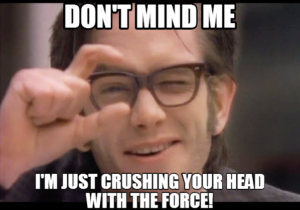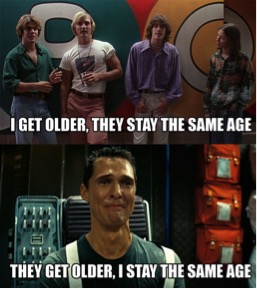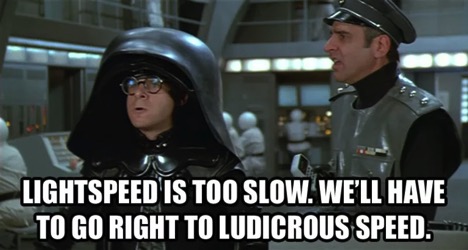
Prompt Images
Einstein’s Theory of Relativity says some very bizarre things about the nature of space and time. One of the strange claims of relativity is that time runs differently for people traveling at vastly different speeds. I don’t mean that time just appears to be running differently for these different people, in the sense that it sometimes appears as though you can crush someone’s head between your fingers.

I mean time actually runs differently.
Now look, the film Interstellar played fast and loose with some concepts in modern physics. For example, we don’t know what the inside of a black hole looks like – but it probably doesn’t look like the world’s strangest curtain factory.

But remember how in the film Matthew McConaughey’s character ended up aging slower than his fellow space travelers on account of him spending time close to a black hole? That is a thing that could actually happen. That is one example of how relativity can cause time to pass differently for different people.

In Interstellar, it was a black hole that caused time to get all funky, but a similar effect can occur when two people are traveling at vastly different speeds. Consider the so called “Twin Paradox,” a mainstay of any introductory course on relativity. The gist of this paradox is that you start with two twins, call them Tom and Brady, and put Brady on a rocket ship while Tom stays on earth. If Brady’s rocket ship goes fast enough, and he travels for long enough, when he gets back to earth he will actually be younger than Tom. Like years younger.

This isn’t just hypothetical either – physicists have measured this phenomenon in particles traveling at super high velocities. The fast moving particles “age” differently than particles moving at much slower speeds.
If it makes absolutely no sense to you how this is possible, it is because you have the (understandable) misconception that distances and periods of time are absolute: A meter is a meter is a meter, and a second is a second is a second. Who gives a damn how fast Brady’s spaceship is going? A clock is a clock is a clock and so time shouldn’t be any different for the two twins, right?
Well, Einstein begged to differ. His first stab at the Theory of Relativity (published in 1905) put forth the idea that time and space are not absolutes, at least for people traveling at different speeds. What is absolute, even for people moving at different speeds, is the speed of light, which, at 186,000 miles per hour, is ludicrously fast.

To understand why this one fact upends our entire understanding of space and time, you have to first understand how we typically think of relative motion between two objects. You see, we always measure speed relative to something. How we calculate speed depends on our point of comparison. Usually it’s just the ground, so we don’t need to clarify, but in theory, we could choose to measure our speed relative to anything else.
And if we change our point of reference, it changes how fast we say we are going. If a Ferrari flies by me at 150 mph, I can always step on the pedal of my Maserati and catch up to it – and once I’m traveling 150 mph myself I’ll look over and for all intents and purposes that Ferrari is standing still (relative to me). I’m going 150 mph relative to the ground, but 0 mph relative to the Ferrari.

Before Einstein, physicists believed that was how things always worked. Speed is always relative – if you yourself speed up or slow down it will change how fast some other object is moving relative to you. This is known as Galilean Relativity.
With his 1905 paper, Einstein showed that Galilean Relativity was only true some of the time. To do this Einstein made the claim that light is special: It doesn’t matter how fast you are traveling, you will always see light passing you at the same constant speed, a whopping 186,000 mph.
To be clear, this is different from the behavior of every other object in the universe. If you run at 5 mph and throw a ball at 100 mph while running, the ball, relative to the ground, will be moving at 105 mph (100 + 5). Now, if you run at 5 mph and turn on a flashlight (which you can think of as “throwing out” beams of light at 186,000 mph) that light WILL NOT be traveling 186,005 mph (186,000 + 5) relative to the ground. No, it will just be scooting along at a mere 186,000 mph. You can’t make light go faster. Or slower.
I realize this makes no (common) sense. Evolution did not design our minds to comprehend this sort of thing at an intuitive level. Luckily, evolution did give us philosophers and mathematicians and physicists who figured out ways to understand these things: by sidestepping our intuition using logic and math.
In any case, at this point you need only understand one thing: light travels at the same stupidly fast speed of 186,000 mph relative to anyone who wants to know.
OK, now that we hopefully all accept this incontrovertible truth about the universe, we can use it (along with two mirrors) to demonstrate how time can pass differently for different folks. We’ll do that tomorrow, in Part 2.



